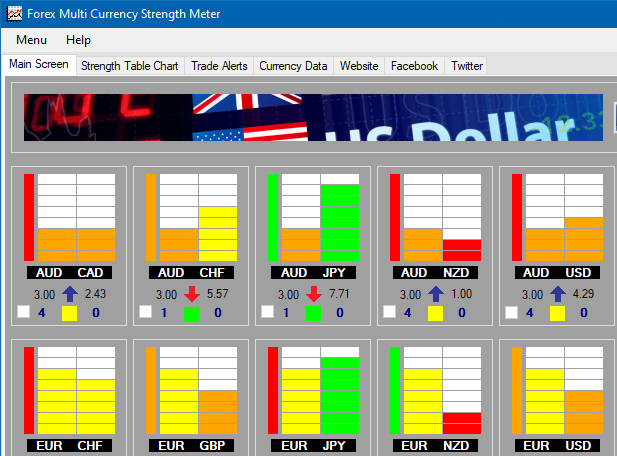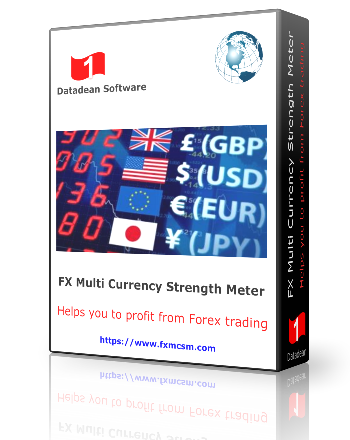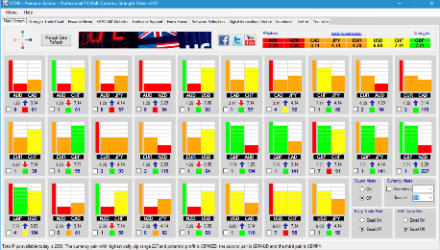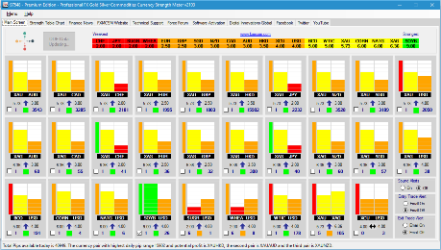How to use a Multi Currency Strength Meter

How to use the FXMCSM currency strength meter to trade currencies
The FXMCSM and FXGSCSM currency strength meters are tools that traders use to measure the relative strength of different currencies in the forex market. It helps identify which currencies are strong or weak at any given time, providing insights into potential trading opportunities. Here's how you can use a currency strength meter to trade currencies effectively:
-
1. Understand the Currency Strength Meter's Basis
First, it's essential to understand on what basis the currency strength meter calculates the strength or weakness of a currency. Most meters use exchange rates of various currency pairs to calculate an aggregate strength or weakness. Some may also incorporate other factors like interest rates, economic indicators, or market sentiment.
2. Identify Strong and Weak Currencies
Use the currency strength meters to identify the strongest and weakest currencies. The idea is to look for trading opportunities to buy strong currencies and sell weak ones. This strategy assumes that strong currencies will continue to perform well soon and weak currencies will continue to underperform.
3. Pair Selection for Trading
After identifying strong and weak currencies, select currency pairs for trading. Ideally, you want to trade a pair of strong and weak currencies; this increases the probability that the trade will move in the desired direction. For example, if the currency strength meter indicates that the USD is strong and the EUR is weak, trading the EUR/USD pair with a short position (selling EUR, buying USD) could be advantageous.
4. Combine with Technical Analysis
While the currency strength meters can provide valuable insights, combining its readings with technical analysis of the currency pairs you're interested in trading is crucial. Look for technical setups that confirm the strength or weakness indicated by the meter; this might include trend analysis, chart patterns, or technical indicators like moving averages, RSI, or MACD.
5. Consider Fundamental Analysis
In addition to technical analysis, consider fundamental factors that might affect the strength or weakness of currencies. Economic reports, central bank decisions, and geopolitical events can significantly impact currency movements. The currency strength meter wll not account for these factors directly, so staying informed about global economic and political developments is important.
6. Risk Management
Use proper risk management techniques when trading based on currency strength; this includes setting stop-loss orders to limit potential losses, managing your position sizes appropriately, and not risking more than a small percentage of your trading capital on a single trade.
7. Monitor and Adjust
Currency strengths can change rapidly due to market dynamics. Regularly monitor the currency strength meters and adjust your trading strategies accordingly. Be ready to close trades or change direction if the market conditions shift.
The FXMCSM and FXGSCSM currency strength meters can be a powerful tool in your trading arsenal, helping to highlight potential trading opportunities based on the relative strengths of different currencies. However, using these tools as part of a broader trading strategy is important, incorporating both technical and fundamental analysis and always adhering to sound risk management practices.
More items to consider
Use FXMCSM for Forex currency strength analysis with the Metatrader 4 and 5 applications
Helps you to improve your Forex trading profitability for 28
major currency
charts, to find out which Fiat currencies are weak and strong.
Use FXGSCSM for Forex Gold, Silver and Commodity strength analysis with the Metatrader 4 application
Constantly calculating 2436 pieces of Forex price data each
second,
for the Forex currency Gold, Silver and Commodities markets.
Use AI Trading Assistant for Forex, Crypto and Stock market trading with the Metatrader 5 application
Using Artificial Intelligence to calculate price data each
second,
for the Forex, Crypto, and Stock markets.



